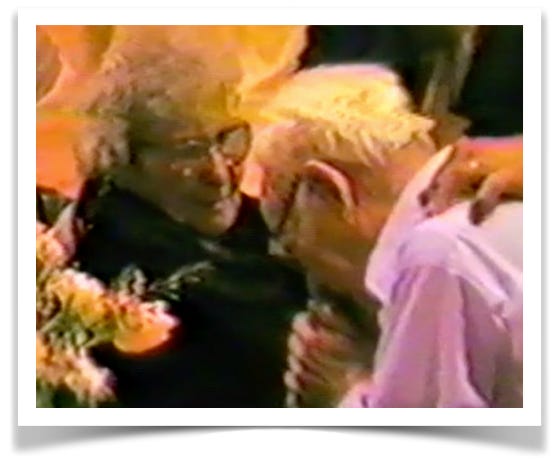Pt 6: Love Across the Ocean: The Story of Guiseppa and Antonio Corbo’s Journey towards la bella vita
Tony and Josephine Begin Their Life Together
In parts 1, 2, 3, 4, and 5, despite nearly insurmountable obstacles over the seven years they were separated, including new immigration laws in America that strictly limited the amount of immigrants from Southern Europe, Guiseppa was finally able to make the journey to America. Upon arrival, she promptly married Tony, who had newly been awarded his citizenship.
In the 1920 census, which was taken in January of that year, Tony was living with his brother Nick & his wife Emilia. Nick had immigrated to St. Paul in 1910, a few years before Tony. And now he was married and had children. When Tony and Guiseppa, who was now going by Josephine, married in August, it’s quite likely that they lived in the house together at least for a short bit. But by May 15, 1921 - almost precisely nine months after they were married - she and Tony were living at 506 Beaumont Street and Josephine had delivered her first child - Louis John Corbo. Louis came into the world at 3 AM amidst a “parade of Northern Lights” and was delivered at home by a neighborhood midwife.
More children quickly followed. In all there were seven babies born between 1921-1933. Tony’s career with the railroad was consistent starting in 1920 until he retired 25 April 1960 at the age of 66. For most of those years he worked as a car repairer at the Como Shops.


They lived and raised their children through the Depression, a second world war — where all four of their sons were part of the United States Armed Forces — and a wave of worldwide social, economic, and technology-related changes.
By the year 1987, Tony and Josephine were both living at Little Sister’s of the Poor nursing home in St. Paul, Minnesota, but they rarely saw each other. Josephine had Parkinson’s disease as well as dementia. She was 90 years old. Aside from the normal ailments of an older man such as hearing loss, Tony was ok. But because of the extra care Josephine required, they were separated. On 18 January 1987, the family threw a large party to celebrate Tony’s 93rd birthday. Friends and relatives came to visit and celebrate. While Tony was not suffering from dementia like his wife, he visibly seemed to be depressed. He rarely smiled, rarely talked, rarely got up from his chair.
To many it seemed that perhaps he had given up. That changed when in the middle of the party, Josephine was wheeled into the room. A hush fell over the room, the crowd parted and Josephine was slowly wheeled over to Tony. Despite his bad eyesight, upon realizing who was coming towards him, a large smile grew across his face. Tears were streaming down the cheeks of all in the room. Tony began sobbing with joy. He greeted his wife of 67 years by taking her hand in his and gently kissing it. She began to cry too, seemingly in recognition of her husband. Tony wiped her tears away. They came together in an embrace. From that point forward in the party he was full of life: talking with large gestures and continually smiling.
A little more than a year later on 2 April 1988, Josephine died. Her official cause of death was “myocardial infarction.” Three years later, Tony died on his birthday - 15 January 1991 - at age 97. He is buried with his wife at Union Cemetery in Maplewood, Minnesota.
The fact that Tony and Josephine spoke primarily Italian and understood little nor wrote much in English is a tribute to the immigrant community in East St. Paul. Surrounding themselves with others from Italy, doing business at Italian shops and working among other Italian speakers on the railroad meant that there was no need to learn English. From the day they arrived to the day they died, they stuck with their old traditions and worked hard to make a beautiful life for their children. A life filled with opportunity to pave their own path to success, knowing that family was at the center of it all.
Of course, prior to their deaths, their children grew up, married, had children and some of those children had children and so-on. My memories as a great-grandchild are centered around their home on Collins Street and especially the kitchen.
I recall there was a door to the dirt-floored cellar in the corner of the kitchen and often Great-Grandpa (whom, of course we just called “Grandpa”) would emerge with a bottle of homemade vino in each hand. He wore thick glasses, but you could see the sparkle in his eyes when he smiled. “Saluti,” he would say as he passed out little juice glasses of wine. The grown-ups would all raise their glass and in unison repeat “Saluti.” I didn’t notice it then, but was told later that the vino didn’t go down easy, but Grandpa had made it himself with grapes he grew in the yard. He was proud of the grape-growing skills he brought with him from Italy and his scrappy way of harvesting and fermenting them in the cellar. Sometimes on Sundays, Grandma would go to the top step of the cellar and bring out her large crock of roasted gypsy peppers marinating in vinegar, olive oil and spices. A pepper sandwich on fresh baked bread with slabs of butter was a real treat and something I miss today. “Mangiare” (eat) she would say.
A beautiful life indeed.


See the fun and creative way in which I was able to entice my relatives to help me fill in some of the blanks to the story of my great-grandparents.




